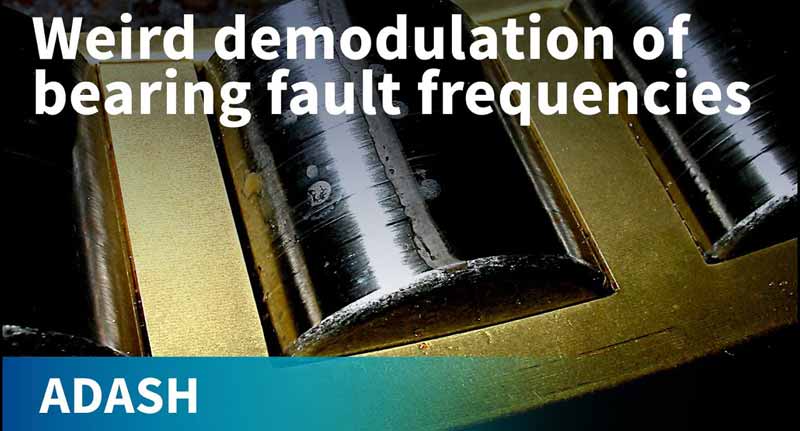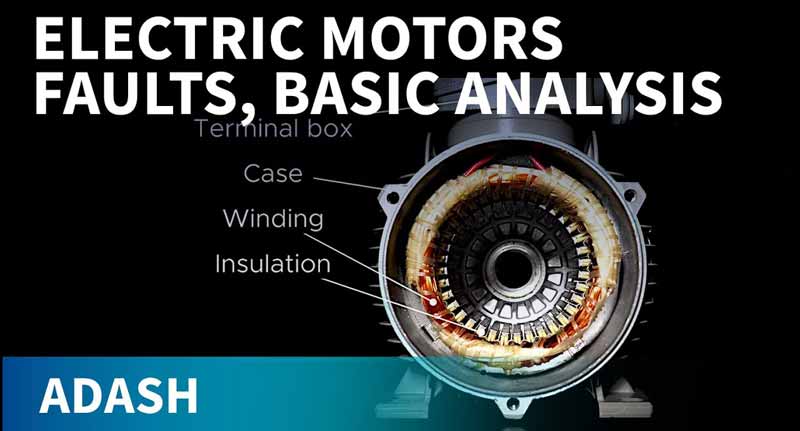Adaptives Online-Überwachungssystem
19.01.2021
Adash adaptives Online-Vibrationsüberwachungssystem – weniger Daten speichern, alle Informationen behalten, kontinuierlich messen.
Es gibt nur einen grundlegenden Unterschied zwischen tragbaren Instrumenten und Online-Systemen. Die Online-Geräte messen die ganze Zeit kontinuierlich, was uns zu einem Hauptproblem führt. Die Datenmenge ist riesig. Wie kann man sie in angemessener Zeit verarbeiten? Die Größe der Festplatten scheint heutzutage endlos und die Geschwindigkeit der Prozessoren scheint ebenfalls endlos. Aber das stimmt nicht. Wir müssen auch heutzutage sorgfältig planen, was und wie oft wir messen. Die Grenzen bestehen immer noch. Nehmen wir einen Messpunkt an. Ein gedankenloser Benutzer, der die Konsequenzen nicht berücksichtigt, legt das Spektrum mit 25600 Linien und die Zeitwellenform mit 32768 Proben fest. Jede Linie und Probe benötigt 4 Bytes auf dem Laufwerk. Das bedeutet mehr als 100 kB für jedes Spektrum und Zeitsignal. Und jetzt multiplizieren Sie das Ganze, weil der Benutzer jede Sekunde messen möchte und 16 Maschinen mit jeweils 5 Punkten auf jeder Maschine messen muss. Er benötigt fast 2 Terabyte für einen Tag. Ein weiteres Problem ist, dass solche Benutzer diese Systeme auf einem kleinen Laptop ausführen möchten. Wie kann ich die Datenmenge verringern? Der übliche Ansatz besteht darin, nur in Zeitintervallen zu messen. Ich messe beispielsweise den ISO RMS in mm/s. Eine Messung dauert 1 Sekunde. Ich muss die Daten verdünnen. Ich stelle das Zeitintervall zwischen den Messungen auf 5 Minuten ein. Diese Einstellung hat einen Nachteil. Ich weiß nicht, was zwischen den Messungen passiert ist. Das Signal könnte sehr variabel sein. Adash möchte kontinuierlich messen. Wir haben ein spezielles Online-Datenverwaltungssystem entwickelt, das alle genannten Probleme löst. Unsere Lösung erfüllt beide widersprüchlichen Kriterien. Das bedeutet, dass wir die ganze Zeit kontinuierlich messen. Wenn die Messung 1 Sekunde dauert, werden pro Minute 60 Messungen durchgeführt. Aber wir verringern auch die Datenmenge. Das bedeutet, dass wir nur eine angemessene Datenmenge speichern. Wie machen wir das? Die Hauptregel lautet: Wenn der gemessene Wert derselbe ist, gibt es keinen Grund, ihn immer wieder zu speichern. Aber zwei gemessene Werte sind nie genau gleich. Wir definieren dafür den speziellen Vergleichsparameter. Es ist der signifikante Unterschied zwischen den Werten. Er wird in Prozent angegeben. Wir verwenden 5 % als Standardwert. Nehmen wir an, der zuletzt gespeicherte Wert beträgt 2,00 mm/s. Wir speichern den nächsten Wert, wenn er höher als 2,1 oder niedriger als 1,9 ist. Die Differenz zu 2,00 muss größer als 5 % sein, also größer als 0,1 mm/s. Als zweite Funktion haben wir unsere eigene Adash-Komprimierungsmethode entwickelt. Unsere Datengröße beträgt nur 25 % der Originalgröße. Der wichtige Teil des Adash-Online-Systems ist die DDS-Software. Alle Einstellungen werden in dieser Software vorgenommen. Der Baum enthält die Struktur der Maschinen, Messpunkte und Messarten wie Gesamtmessung, Spektrum, Zeitwellenform und Nächstes. Das DDS zeigt auch die gemessenen Daten an. Das DDS startet und stoppt das Online-System. Mit DDS können Sie Maschinenschemata mit tatsächlichen Werten, Datentrends, Spektrumdiagrammen und Zeitwellenformen erstellen. Auf sogenannten Echtzeit-Panels können Sie die zuletzt gemessenen Werte anzeigen und sehen, dass das System aktiv ist. Fortgeschrittene Benutzer können die oben erwähnte Standardkonfiguration zur Datenspeicherung ändern. Es gibt eine kurze Textdatei, die Parameter zur Systemsteuerung enthält. Die Standardeinstellungen sollten jedoch alle Standardanforderungen für Online-Messungen erfüllen.
Viele Benutzer haben Angst vor Online-Systemen. Sie nehmen an, dass diese viel komplexer sind als die Verwendung tragbarer Einheiten. Das stimmt nicht. Bei Adash-Systemen ist das Niveau gleich. Bei Adash arbeiten die tragbaren und Online-Systeme mit nur einer DDS-Software. Sie können Daten aus beiden Systemen einfach gemeinsam nutzen. Und das adaptive Adash-System ermöglicht kleine Datenbanken und eine sehr schnelle Datenverarbeitung auf einmal.
Möchten Sie Referenzen? Unsere Adash-Systeme sind in allen tschechischen Kernkraftwerken installiert. Sogar im Primärkreis in Hochtemperaturumgebungen.





